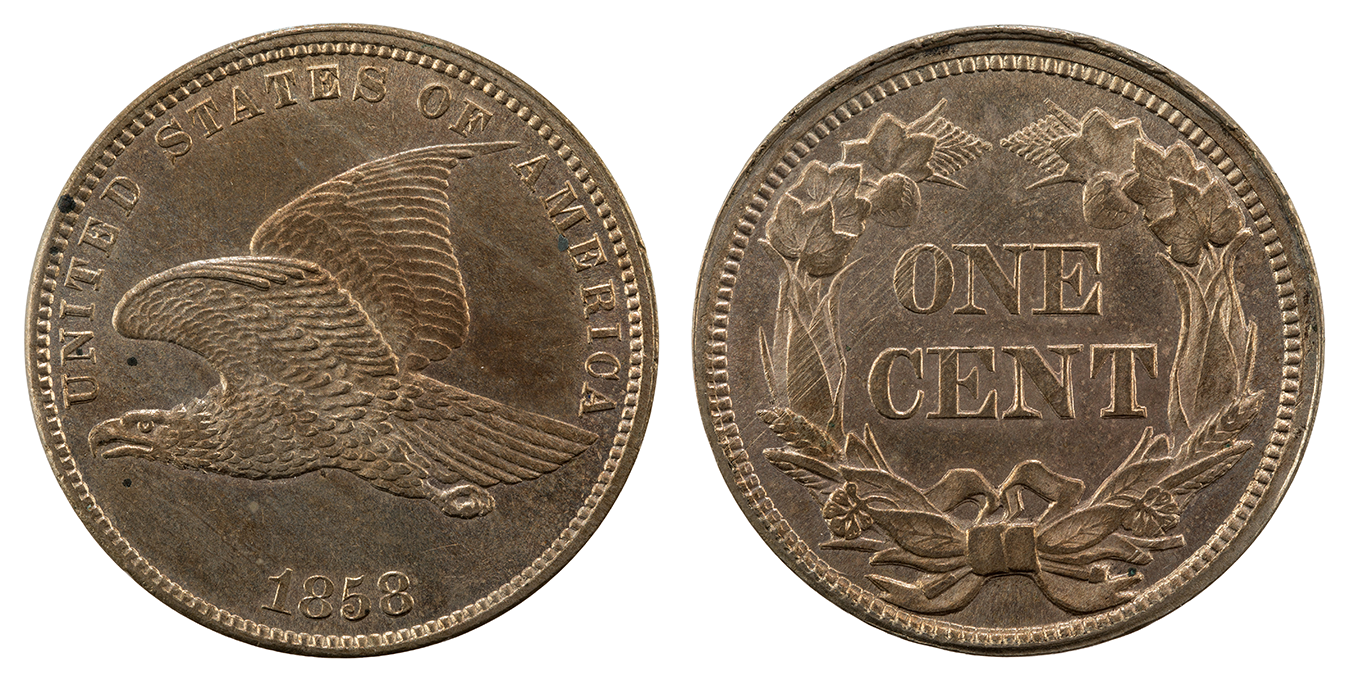
The story of the Flying Eagle Cent is a captivating chapter in the annals of American currency, encapsulating a period of innovation, inspiration, and transformation. Minted briefly in 1857 and 1858, this coin not only marked a significant departure in the design and composition of the penny but also embodied the spirit of a nation poised on the cusp of modernity. This article delves into the fascinating journey of the Eagle Cent, from its inception to its legacy, weaving through the tale of an iconic bird that inspired its creation, the challenges of its minting, and its enduring allure in the numismatic world.
A Vision Takes Flight: The Minting of the Eagle Cent
The inception of the Flying Eagle Cent was driven by a practical necessity to overhaul the cumbersome, large-diameter copper pennies of the time. The U.S. Mint’s response was both bold and innovative: a smaller, lighter coin made from a copper-nickel alloy. This pioneering venture introduced in 1857 not only addressed the logistical issues of coinage but also set a new aesthetic standard. The Eagle Cent was the first U.S. coin to feature the denomination in such a compact, durable form, setting a precedent for future minting endeavors.
Inspirations of the Sky: The Design of the Eagle Cent
The design of the Flying Eagle Cent is a testament to the ingenuity and artistic vision of James Barton Longacre, the Chief Engraver of the U.S. Mint. Moving away from the traditional depictions of Lady Liberty, Longacre chose the image of an eagle in flight for the obverse of the coin. This was more than a mere artistic decision; it was a symbolic reflection of America’s ideals of freedom and progress. The eagle, as the national bird, was emblematic of the country’s soaring aspirations and its relentless pursuit of greatness.
If you’re visiting us for the first time, don’t forget to sign up for the Bucketlister newsletter! We publish weekly, covering the most desirable metal detecting finds.
Peter the Eagle: More Than a Mascot
Central to the story of the Eagle Cent is Peter, a real bald eagle that resided at the Philadelphia Mint and became an integral part of its history. Peter was not just a pet; he was a living emblem of the Mint, inspiring Longacre’s designs and becoming a beloved figure among the Mint’s workers. Tragically, Peter’s life ended in an accident involving the Mint’s machinery, leading to his untimely death. In a tribute to his significance, Peter was preserved and mounted, becoming a lasting symbol of the Mint’s heritage and its connection to the natural world that inspired its coinage.
The Brief Flight of the Eagle Cent
Despite its innovative design and symbolic significance, the Flying Eagle Cent was minted for general circulation for only two years. Several factors contributed to its short lifespan. The coin’s intricate design led to production difficulties, with the high relief of the eagle causing issues in the minting process. Additionally, the public’s reception was mixed, and the rapid evolution of coinage technology and design preferences prompted the Mint to seek alternatives. In 1859, the Indian Head Cent was introduced, marking the end of the Eagle Cent’s circulation.
Rarity and Collectability: The Legacy of the Eagle Cent
The limited minting period of the Flying Eagle Cent has rendered it a highly sought-after piece among collectors. In 1857, approximately 17.4 million pieces were minted, followed by an unspecified but smaller quantity in 1858, making it relatively rare. Its historical significance, combined with the story of Peter and the coin’s beauty, contribute to its collectability. For numismatists, the Eagle Cent is not just a piece of currency but a piece of American history, encapsulating a moment of change and the spirit of innovation that characterizes the nation’s journey.


